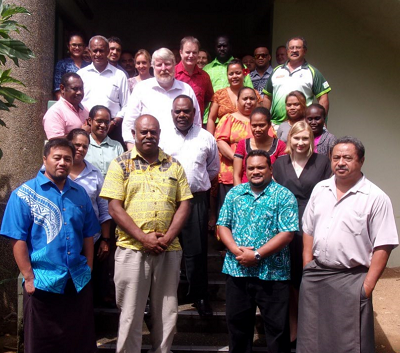
Participants at the recent Sendai Framework Monitor training in Suva, Fiji, supported by the Australian government
SUVA, Fiji 28 March 2018 – Six weeks after it was hit by a Category 4 cyclone, Tonga is now trained in the use of the new online tool for measuring disaster losses, the Sendai Framework Monitor.
Rolling out the Sendai Framework Monitor is part of Pacific-wide efforts to implement the global plan for reducing disaster losses, the Sendai Framework for Disaster Risk Reduction 2015-2030.
Senior disaster managers and statistics officers from ten countries attended the introductory training: Australia; Cook Islands; Fiji; Federated States of Micronesia; Palau; Republic of Marshall Islands; Samoa; Solomon Islands; Tonga; and Vanuatu. All of these countries are exposed to a high level of disaster risk associated with climate change including sea level rise and the growing intensity of extreme weather events such as storms, floods, heatwaves and drought.
The Head of Tonga’s National Emergency Management Office, Mr. Leveni Aho, said the Sendai Framework Monitor had the potential to better inform policymaking, improve coordination and preparedness, and, in so doing, reduce disaster risk and associated losses.
“The Sendai Framework Monitor is something we could use to bring everyone on board – from the Ministry of Finance and Planning as well as other parts of government – all working together to strengthen overall disaster management and risk reduction efforts,” he said.
Last month, Cyclone Gita caused two fatalities, damaged or destroyed over 1,000 homes and caused US$140 million in direct economic losses across Tonga’s two main islands Tongatapu (including the capital Nuku’Alofa) and Eua. The agricultural sector was hardest hit: 90% of fruit trees and 40% of root crops were destroyed.